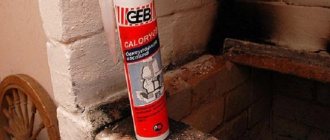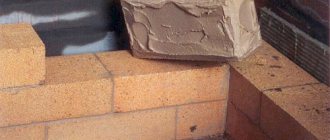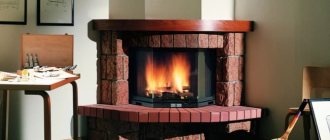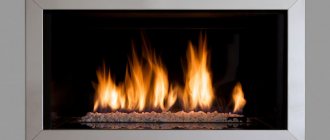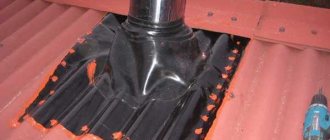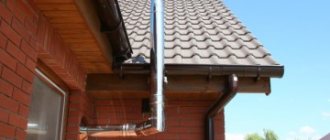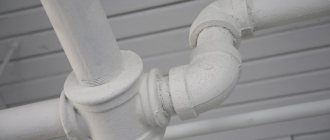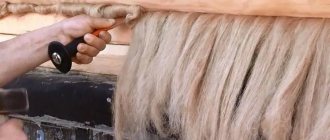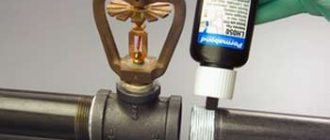High-temperature furnace sealant allows you to seal holes and cracks, which is essential for the proper and safe functioning of the heating unit. The main feature of this sealant is that it is able to adapt to different temperatures without changing its properties.
The market offers a wide selection of high-temperature sealants from various manufacturers, each of which has its own advantages and disadvantages, which are best assessed before purchasing rather than during operation of the furnace.
Areas of application of thermo-sealants and what are the dangers of ignoring cracks in stoves and fireplaces?
Fireplaces and stoves develop cracks in the facing layer during frequent and prolonged use.
This is unsightly from an aesthetic point of view, and is also dangerous to health:
- Fuel consumption increases - additional air from outside enters the combustion chamber, which speeds up the combustion process. You will have to add fuel more often, the consumption will increase 2-3 times.
- Soot and soot - through even the smallest cracks, soot gets out and settles on the ceiling, floors and furniture around the fireplace. You will have to clean several times a day.
- The entry of carbon monoxide into the living room - through cracks, smoke, which should completely exit into the chimney, leaks into the house. This is dangerous due to the development of carbon monoxide poisoning, especially in the absence of proper ventilation.
The most dangerous condition that can develop when the heating system depressurizes is the formation of combustion in the chimney. Due to the high concentration of oxygen and the decrease in combustion temperature in the combustion chamber, highly flammable soot forms on the inner walls of the chimney.
To prevent these negative consequences from overshadowing the operation of the stove or fireplace in the house, heat-resistant sealant is used for minor repairs. This is convenient, since you can cover up a gap or crack yourself at any time, postponing major repairs until the summer.
Heat-resistant sealants are also used for:
- Sealing chimney pipes during installation and repair: sealing small and large cracks along the contour and on the chimney itself.
- Waterproofing of contact points between the roof and chimneys made of various materials.
- Bonding heat-resistant gaskets with metal fittings.
- Seal cracks on the outside of a brick or metal combustion chamber.
Some sealants can be used to restore fire-resistant masonry if there is damage, but there is no way to redo the masonry.
“Craftsmen” claim that there is no point in spending money on sealants, since clay successfully copes with their function. But no kaolin compound can dry out so quickly and seal all sorts of cracks so reliably.
Expert opinion
Borodin Vasily Platonovich
Stove mason, specialist in fireplaces, stoves and heating systems
In practice, sealant is a “lifesaver” if urgent repairs are needed. You will have to tinker with the clay mortar, and the joints between the brick and the metal slab cannot be properly sealed a priori.
Varieties
Sealants are widely used. But for each type of work it is necessary to select the appropriate type of composition, taking into account its characteristics and the conditions for which it is used.
- Polyurethane is suitable for many types of surfaces and seals well. It is used to assemble building blocks, fill seams in a variety of structures, and make sound insulation. It can withstand heavy loads and harmful environmental influences. The composition has excellent adhesive properties and can be painted after drying.
- Transparent polyurethane sealant is used not only in construction. It is also used in the jewelry industry, as it firmly holds metals and non-metals, and is suitable for creating subtle, neat connections.
- The two-component professional composition is difficult for household use. In addition, although it is designed for different temperatures, it cannot withstand long-term high-temperature conditions.
- When installing and repairing structures that are exposed to high heat or fire, it is appropriate to use heat-resistant compounds . They, in turn, depending on the place of application and the substances contained, can be heat-resistant, heat-resistant and fire-resistant.
- Heat-resistant silicone is designed for sealing those places that during operation warm up to 350 degrees C. These can be brickwork and chimneys, elements of heating systems, pipelines supplying cold and hot water, seams in ceramic coatings on heated floors, external walls of stoves and fireplaces.
In order for the sealant to acquire heat-resistant qualities, iron oxide is added to it, which gives the composition a red color with a brown tint. When frozen, the color does not change. This feature is very useful when sealing cracks in red brick masonry - the composition will not be noticeable on it.
A heat-resistant sealant option also exists for motorists. It is often black in color and is intended for the process of changing gaskets in a car and other technical work.
We recommend: Do-it-yourself Russian oven - detailed instructions and video instructions
In addition to resistance to high temperatures, it:
- does not spread when applied;
- resistant to moisture;
- oil and petrol resistant;
- tolerates vibrations well;
- durable.
Silicone compounds are divided into neutral and acidic. Neutral, when hardened, releases water and alcohol-containing liquid, which does not harm any materials. It is suitable for use on any surface without exception.
When acidic, when solidified, acetic acid is released, which can cause metal corrosion. It should not be used on concrete and cement surfaces as the acid will react and salts will form. This phenomenon will lead to the destruction of the sealing layer.
When sealing connections in the firebox or combustion chamber, it is more appropriate to use heat-resistant compounds. They provide a high level of adhesion to concrete and metal surfaces, brick and cement masonry, and can withstand temperatures of 1500 degrees C, maintaining existing characteristics.
A type of heat-resistant sealant is fire-resistant sealant. It can withstand open flames.
When building stoves and fireplaces, it is advisable to use a universal adhesive-sealant. This heat-resistant composition can withstand temperatures in excess of 1000 degrees C. In addition, it is fireproof, that is, it can withstand open flames for a long time. For structures in which fire burns, this is a very significant characteristic. The glue will prevent fire from reaching surfaces that have a melting point much lower than 1000 degrees C, and which release toxic substances when melted.
Types of high temperature sealants
High temperature sealants differ in the composition of their thermal paste. It is this factor that allows the production of sealants with different temperature gradients, used for finishing various parts of stoves and fireplaces.
Silicate heat-resistant sealant
The base is sodium silicate. Outwardly it looks like a black plastic mass that is convenient to work with. When hardened, it forms a dense, inelastic, heat-resistant layer.
Characteristics:
- Long-term use temperature - 1300°C.
- Short-term use temperature – 1400-1500 °C.
- Hardening time is 15 minutes, subject to the recommended ambient temperature.
- Seam thickness – 15 mm.
- Deformation without destruction of the thermal layer – 7%.
Advantages:
- It hardens quickly and is activated within the temperature range of 1-40°C.
- Does not have a pronounced toxic odor.
- The mass is plastic, easy to apply and knead.
- Long service life.
- Does not cause cracks to expand when heating an already hardened composition.
Flaws:
- It is better to use in those stoves and fireplaces that have already shrunk, otherwise there is a risk of cracking of the sealant when the stove materials expand from heating.
Great for filling cracks and gaps
Silicate sealant is recommended for use in the following cases:
- Sealing cracks and gaps that formed during the operation of fireplaces and stoves between the metal elements of the slabs and the brickwork. The adhesion in this case is better than that of any other sealant, paste or kaolin mixture.
- Sealing cracks in combustion chambers and surfaces that are in direct contact with fire and high-temperature gases.
- Sealing the joints between the roofing surface and the chimney.
- Sealing cracks and eliminating leaks from heating boilers.
Not all silicate sealants are fireproof. When sealing cracks in combustion chambers, choose sealants that indicate that use near fire is permitted.
Silicone heat-resistant seal
This category of sealants is distinguished by the addition of iron oxide to the silicone composition, which has a characteristic pink tint. Their main advantage is zero deformation, which allows the use of sealants not only in repairs, but also in the installation of heating devices.
Characteristics:
- Complete drying time is 20 minutes.
- Operating temperatures – up to +300°С.
- The ability to seal narrow but deep cracks, which is facilitated by convenient packaging in the form of a tube with a thin spout.
- Can be applied to a cold or warm base without worrying about the quality of the paste.
- Increased resistance to UV radiation, which allows the composition to be used for sealing joints on the roof.
Advantages:
- Long service life
- Waterproof
- Does not change shape when the oven temperature fluctuates, does not deform under increased loads
- Cost is lower than silicate, convenient packaging
Flaws:
- Suitable only for those surfaces whose operating temperature is within +300°C.
Main Applications
Silicone heat-resistant sealants have found themselves in the following areas of application:
- sealing chimneys on the roof;
- treatment of smoke exhaust ducts of metal and brick chimneys;
- sealing blind cracks on the surfaces of stone fireplaces and stoves.
Expert opinion
Borodin Vasily Platonovich
Stove mason, specialist in fireplaces, stoves and heating systems
Also, the high-temperature composition is used to seal joints in heating systems and circuits with elevated temperatures.
Popular brands of heat-resistant sealants
In any hardware store you can find a large number of sealants from various manufacturers, both domestic and foreign. Next, several of them will be considered, from among those that have earned the trust of the Russian consumer and are in wide demand.
"MAKROFLEX"
MAKROFLEX is an Estonian company that produces various sealing compounds and insulating materials. Its product range includes fireproof and heat-resistant sealants, which have long been used in construction and renovation and have earned many positive reviews.
- "MAKROFLEX HA147" is a fire-resistant sealant based on inorganic compounds. Hardening of this composition occurs as a result of the evaporation of water from it, after which a rigid compound is formed that is resistant to cracking and high temperatures. It is used for repairing connections with low mobility, which are exposed to high temperatures, reaching up to 1200 permanently and up to 1500 degrees for a short time.
This sealant is used for various materials - brick and concrete, glass and steel, cast iron and anodized aluminum.
Cartridge with sealant "MAKROFLEX HA147"
This sealing material has the following advantages:
— excellent resistance to open flame;
— high adhesion with most modern building materials;
— this sealant is not subject to shrinkage;
— it does not emit smoke or other harmful fumes;
- in a frozen form - susceptible to staining.
Areas of application for MAKROFLEX HA147:
— sealing of various gaps in furnaces, both in brick and metal ones;
— sealing of connections in contact with open fire;
— installation of combustion chamber lining;
— fixation of fire-resistant slabs and panels;
— sealing of connections in electric furnaces, ovens, chimneys, as well as in car exhaust pipes.
Prices for heat-resistant sealant MAKROFLEX
heat-resistant sealant MAKROFLEX
- “MAKROFLEX heat-resistant red 3 ” is a special silicone-based material intended for use in connecting assemblies of various devices and structures exposed to constant exposure to elevated temperatures, as well as thermal changes.
The material has high adhesion to ceramic parts, glass, enamel, aluminum, wood, artificial stone and brick. At the same time, it is completely unsuitable for acrylic surfaces and metal parts susceptible to corrosion, as well as for natural stone.
The packaging is similar in appearance, but the performance characteristics are completely different, so you need to be careful when choosing
The characteristics of this sealant include the following:
— application temperature – in the range from +5 to + 40 degrees;
— operating temperatures: from -65 to +260 ºС permanently, +315 ºС – temporarily;
— application time after opening the cartridge – approximately 15 minutes;
— guaranteed drying time with a layer thickness of 5 mm is 48 hours (at a temperature of +23 degrees and 50% humidity).
Areas of application for MAKROFLEX heat-resistant red 3:
— heating devices operating within the specified temperature range;
— some areas of furnaces;
— elements of ovens;
— ceramic panels installed on kitchen stoves;
— repair of heating circuits;
— repair of electric motors and pumps.
Video: example of practical use of heat-resistant sealant “Makroflex HA 147”
"SOUDAL"
“SOUDAL” - this sodium silicate-based sealant for stoves and fireplaces is manufactured by a Belgian manufacturer. The material is resistant to high temperatures, reaching up to 1500 degrees. The sealing composition does not contain asbestos and does not crack or crumble after hardening.
Heat-resistant sealant “SOUDAL”, popular among stove-makers
The paste is black in color, so it is well suited for sealing cast iron stove elements. In addition, paint adheres perfectly to a frozen seam, and thanks to this, the seam can be disguised as a surface of any color. The maximum depth and width of the gap to be sealed should be 5 mm. If wider and deeper cracks occur, for example, in bricks or seams between them, you need to seal the depth of the gap with another composition, leaving 5 mm from the wall surface for sealant. After hardening, this composition does not crack or crumble.
Prices for heat-resistant sealant SOUDAL
heat-resistant sealant SOUDAL
The main areas of application of this composition include:
-sealing and waterproofing of passages and junctions of the chimney pipe with the roof;
— installation and repair of furnace equipment, including lining of the heating chamber;
— repair of heating boilers;
— sealing gaps between brick surfaces of stoves and cast iron elements.
"Krass"
“Krass fireplaces and stoves” is a Russian-made sealing compound that is highly fire resistant. This sealant is intended for the construction or repair of brick stoves, heating devices and units in areas exposed to open fire. The composition can withstand temperatures reaching up to 1250 degrees.
Tube of heat-resistant sealant “Krass fireplaces and stoves”
The sealant is made on the basis of liquid glass and has a black color. It is wear-resistant, gas-tight, and forms a non-shrinking rigid seam. The paste has high adhesion to stone, brick, metal and ceramics. The composition does not spread when applied, and when hardened it does not crack. It can be used to seal surfaces or chimney joints outdoors as it is weather resistant.
This composition is characterized as follows:
— pasty consistency;
- hardening system - fiberglass, liquid glass and kaolin;
— application temperature – from +5 to +40 degrees;
— operating temperatures: from -15 to + 1250 degrees;
- hardening period - a day (it, however, depends on atmospheric humidity and temperature - the optimal parameters indicated by the manufacturer are 50% humidity and a temperature of 23 degrees, as well as the thickness of the applied layer);
- setting (formation of a surface film) under the same temperature conditions takes about 5 minutes.
Prices for heat-resistant sealant Krass
heat-resistant sealant Krass
Areas of application for this sealing compound:
— in ovens – areas of direct exposure to fire or high surface temperatures;
- connection of roofing materials to the chimney pipe;
— car repair;
— used at the junctions of ventilation duct sections.
At the same time, it is not recommended to use “Krass fireplaces and stoves” for sealing joints in the circuits of the central heating system, gas supply, as well as in moving seams.
"PENOSIL"
«PENOSIL is also an Estonian manufacturing company that produces sealing compounds for a wide range of applications.
- “ PENOSIL Premium +1500° C Sealant” is a professional fire-resistant and heat-resistant sealant made on the basis of liquid glass and designed to protect gaps and seams from moisture and elevated temperatures reaching up to 1500 degrees.
Cartridge with heat-resistant sealant “PENOSIL Premium +1500°C Sealant”
The composition of “PENOSIL Premium +1500°C Sealant” is characterized as follows:
— the sealant has excellent adhesion to brick, tile, natural and artificial stone, metal and concrete;
— the composition is durable - the laid seam does not crack or crumble;
— does not contain asbestos fibers;
— the paste is black.
Prices for heat-resistant sealant PENOSIL
heat-resistant sealant PENOSIL
Areas of application for this sealant:
— filling of seams and cracks, as well as their compaction in areas of furnaces and boilers with direct exposure to fire and high temperatures;
— insulation and sealing in sections of the stove and chimney that come into contact with high temperatures and moisture;
— repair of walls of furnace and boiler equipment;
— sealing the passages of chimney and ventilation pipes through the roof.
The material must not be used in movable or deformable structures.
- "PENOSIL High Temp" is a heat-resistant silicone-based sealant. It is used to seal and waterproof seams exposed to temperatures up to 250 degrees, located both inside and outside a residential building.
Heat-resistant sealant “PENOSIL High Temp”
The characteristic features of this material include the following:
— application at temperatures from +5 to +40 degrees;
— operating temperatures after complete hardening – from -40 to +250 degrees;
- permissible seam mobility - up to 20%;
- quick setting of the composition - within 20 minutes;
- high adhesion to most building materials - metal, brick, glass, plastic, ceramic tiles, wood;
— the sealant is a paste-like composition of red color.
Areas of application for PENOSIL High Temp:
— sealing of moving seams exposed to high temperatures;
— sealing of passages and joints with the roof of chimney pipes;
— installation of metal, including sandwich chimneys of boiler equipment:
Using heat-resistant sealant “PENOSIL High Temp” to seal the connection of metal chimney links
— repair of automobile components, except those that come into contact with fuel;
— installation work on the arrangement of water supply, heating and ventilation systems.
Rules for choosing heat-resistant sealant for stoves and fireplaces
In order for the purchase to be successful and the repairs to be of the highest quality, when choosing a sealant it is important to determine the following nuances:
- Operating temperature – you need to evaluate in which part of the oven the sealant will be used. If this is a chimney and external cladding, where the temperature is in the range of +300°C, then a silicone-based paste is suitable. Silicate sealants have a much higher operating temperature and are suitable for treating combustion chambers.
- Contact with open flames and gases - the sealant must be fire resistant if it is to be used inside a fireplace or stove. For exterior repairs, the usual composition is suitable.
- Degree of environmental friendliness - sealants should not contain components that, when heated, provoke the formation of toxic compounds. Otherwise, when inhaling such vapors, there is a risk of intoxication.
Naturally, pay attention to the brand and price. Unknown brands at suspiciously cheap (2-3 times lower) prices are a reason to think about possible risks.
Kinds
Currently, the market offers customers many types of sealing compounds, but only two options remain suitable for boilers, stoves and fireplaces. Namely:
- Silicone high temperature sealant (heat resistant).
- Silicate sealant for fireplaces and stoves (heat-resistant).
It is logical that in two cases modern polymers come to the rescue. The product looks like a ready-made paste with different properties and colors. Sold in tubes. In addition, you can find heat-resistant sealants that contain two components. However, it is more difficult to work with them; you must dosage and mix without errors before use, this in turn affects the reliability of the seal and the service life of the connection.
Heat-resistant silicone sealant
After silicone sealant for heating boilers is applied and hardened, an elastic layer of material is formed, somewhat reminiscent of rubber. The color of the composition is usually red, which is explained by the presence of iron oxide in the composition. The maximum temperature is about 250 ºС, some manufacturers claim 280-300 ºС.
Silicone-based sealant for stoves and fireplaces can be confused with red substances that are usually applied to car engine parts during repair work. However, it is worth distinguishing them, the difference is in the chemical composition. The red substance for cars contains an acid, which in the open air begins to evaporate and emits a characteristic vinegar smell.
Silicone thermosealant Moment Germent
High-temperature oven sealants are neutral and have almost no odor. Due to their elasticity, they are not afraid of temperature changes and are resistant to environmental conditions. The maximum layer thickness depends on the manufacturer; information about this can be read on the packaging. But due to the low temperature threshold in terms of thermal technical parameters, the scope of use of high-temperature sealants is limited to the following types of work:
- Sealing brick chimneys in outdoor areas.
- Sealing the connections of roofing materials to the chimney to prevent water penetration.
- Sealing of smoke exhaust ducts made of any materials, in particular sandwich-type chimneys operating together with high-performance boilers (with an efficiency above 90%). In this case, the heating of gases does not occur above 150 ºС, which is normal for silicone compounds.
- All work related to sealing cracks (not through cracks) on the outside of brick structures.
Detailed information about heat-resistant adhesive for stoves and fireplaces is presented on this page.
Heat-resistant silicate sealant
This fire-resistant sealant for furnaces is intended for various works that are associated with the repair of brick structures. The composition is black in color, the maximum temperature is 1250-1500 ºС. The difference is that after hardening the material forms a hard, inelastic layer. Sold in tubes that are inserted into a construction gun.
Silicate sealant for fireplaces Tytan
Heat-resistant sealant for stoves based on silicate has weak adhesion to smooth surfaces, and therefore is practically not suitable for joining stainless steel chimneys. The maximum layer thickness is 15 mm.
Where is the composition used:
- For sealing through cracks in the body of the furnace combustion chamber and other surfaces that have direct contact with open flames or high-temperature gases.
- For sealing weakened joints between brickwork and elements of steel and cast iron furnace appliances.
- For sealing cracks in chimney pipes that discharge high-temperature gases. Including bath stoves, solid fuel boilers and other heat generators with an efficiency factor below 90%.
The best heat-resistant sealants for stoves and fireplaces
Experts recommend buying heat-resistant sealants from those manufacturers who have earned a name for themselves with decent quality. It is better to avoid buying cheap options that do not have detailed instructions, as there is a risk of purchasing a fake.
TYTAN Professional
TYTAN Professional
Fireproof silicate sealant. Suitable for minor repairs of stoves and fireplaces, chimneys. It contains an admixture of fiberglass, which forms a dense smoke- and gas-proof layer. Has good adhesion to metal, concrete and brick.
Advantages:
- Relatively low cost.
- Operating temperature up to +1500°C.
- The composition does not contain asbestos.
- Can be stored in a tube at sub-zero temperatures.
- Can be used to seal cracks in any parts of fireplaces and stoves.
Flaws:
- Complete drying takes at least 24 hours.
The average cost for a tube weighing 300 g is 250 rubles. After use, the sealant is closed using a threaded cap. It can be stored for quite a long time, maintaining its qualities.
Ognez 1600
Ognez 1600
The sealant allows you to effectively seal cracks and glue surfaces together. A distinctive feature is the need to wet the treated surface with water, which improves adhesion.
Advantages:
- Bonds concrete, glass, brick, stone, ceramics.
- Waterproof, suitable for external chimney sealing work.
- The highest operating temperatures, which allows it to be used in all parts of the heating device.
- Easy to apply with a spatula, convenient to work with.
- Can be painted using varnishes and paints with natural composition.
- High level of environmental friendliness.
Flaws:
- Not identified.
The cost of a domestic product is about 240 rubles. When stored correctly, it is not afraid of freezing and defrosting cycles.
MASTERTEKS PM
MASTERTEKS PM
Polish silicate sealant, black. It is easily applied to the surface without requiring preliminary preparation. Suitable for filling various cracks and sealing joints. Dries relatively quickly.
Advantages:
- A convenient screw cap on the spout prevents air from getting inside the tube during storage.
- Dries quickly if the recommended layer thickness is observed.
- Does not crack when the surface cools.
- Excellent adhesion
Flaws:
- Not identified.
The sealant is good in every sense and is literally ideal when working with a chimney.
High temperature resistant compounds
Heat-resistant sealant, as a rule, is made on the basis of ordinary silicone with additives that determine its heat resistance. Sometimes, in order to increase the heat resistance of the silicone mixture, iron oxide is additionally introduced into the composition, which allows it to be applied to surfaces with temperatures up to 250°. For heat-resistant sealants with this additive, a short-term increase in temperature up to 315° is allowed.
We recommend: Wall-mounted and other radiators, convectors for the bathroom
When iron oxide is introduced into a paste-like heat-resistant composition, the latter acquires a characteristic red tint, which makes it possible to use it for ordinary fireplaces and stoves made of bricks of the same color.
At the same time, the appearance of the finished surface practically does not change, since the silicone sealant is completely invisible against a background of a similar color.
Before you buy a heat-resistant sealant, you should pay attention to the composition of the product you are purchasing, since it can be produced in two different versions: neutral or acidic.
Acidic compositions are distinguished by the fact that during the hardening process they release acetic acid, which is dangerous for metals, as a result of which it is undesirable to use them in the area of contact with metal surfaces.
When considering this type of sealing materials, a number of their characteristic properties, classified as additional, should be noted. This:
- resistance to ultraviolet radiation, allowing outdoor use;
- waterproofness, allowing the use of heat-resistant silicone sealants when carrying out external work (when sealing the roof passage of a chimney, in particular);
- high degree of penetration into other materials (adhesion);
- plasticity and resistance to vibration and deformation loads.
The time for complete hardening of such sealants varies from several hours to a day (its exact value is determined by the specific composition of the mixture).
The principle of working with high-temperature sealants
In order for the repair or installation to take place at the highest level, the master should divide the work into several stages, and then complete each one taking into account some of the nuances. The more correctly this is done, the longer the thermal composition will last.
Silicone compounds
Germent - moment
This sealant helps to connect two surfaces made of different materials, as well as seal fairly large cracks.
We will divide the work into several stages:
- Surface preparation : sand the metal surface, remove dust; if water was used for cleaning, wait until it evaporates completely.
- Preparing the sealant : the container is carefully opened and placed in a special construction gun, which makes application of the product more comfortable.
- Applying sealant to the surface : the thickness of the extruded layer should be slightly less than the crack itself. During polymerization, the sealant will fill all microcracks and increase slightly in size.
- Cleaning up stains : Before the mixture has set, excess should be removed with a spatula.
The drying time directly depends on the temperature and humidity in the room. The warmer and drier it is, the faster the sealant will polymerize. Accordingly, in a cool and damp room, the 20 minutes recommended by the manufacturer in practice can stretch to 40-50 minutes.
Silicone pastes
The main difference is the need to work quickly and accurately, since silicone thermal pastes harden very quickly, and there will be no way to correct anything in the future.
We work according to this scheme:
- Surface preparation : sand all surfaces to be treated. If there are seams, then their outer part should be taped with masking tape so as not to stain the surface.
- Preparation of sealant : the tube is inserted into the gun, the tip is cut off diagonally.
- Application : apply a thin layer quickly enough, remove excess immediately.
Expert opinion
Borodin Vasily Platonovich
Stove mason, specialist in fireplaces, stoves and heating systems
I do not recommend making a layer of paste larger than stated in the instructions. This will cause a relatively long drying time, and also does not guarantee a high degree of adhesion of surfaces.
How to Carefully Apply Heat Resistant Sealant
To make it convenient to repair a stove or chimney using sealant, you need to prepare some tools and materials.
So, you will need:
- Construction mounting gun or syringe.
- Rubber spatula.
- Stationery knife.
- A gas burner and, accordingly, a refilled cartridge for it.
- Sealing compound in the cartridge.
- Masking tape.
- Latex gloves.
In the case when the paste is purchased in a tube, a construction syringe is not required, and when using a heat-resistant sealant, there is no need to prepare a burner and a gas cylinder for use.
Sealing joints between bricks requires special care
When applying sealant to surfaces, special care is required when filling seams or cracks, especially if it is necessary to maintain the neat appearance of the masonry, made “for jointing”
To carry out such work efficiently, it is advisable to take into account a couple of tips from experienced craftsmen: .
In order not to stain the surface of the brickwork with sealant, a reasonable solution would be to seal it with masking tape, leaving only gaps along the line of the seams being sealed.
- To prevent the sealant from getting on the surface of the brick and filling only a crack or seam, the surfaces can be sealed with masking tape of the required width. The tape is glued along the seam line, then the gap is filled with sealing paste, approximately one centimeter deep. If necessary, the sealant is leveled with a rubber spatula and there is no need to be afraid that the dark composition will stain the surface of the wall. After the paste has set, the tape is removed. This method will allow you to keep the seams in their original width and not spoil the neat appearance of the brickwork with dark paste.
The tube spout is cut so that the hole is slightly beveled, and its diameter is slightly less than the width of the seams being sealed.
- You can solve this problem in another way, without using tape. To do this, when preparing the tube for work, you should not immediately cut off its spout to the maximum. In addition, the cut should be made at a slight angle and so that the hole is 2-3 mm smaller than the width of the seam - this will help control the amount of sealant squeezed out. True, with this approach there remains a risk of accidental contact of the composition with the surface of the brick, so using adhesive tape is definitely the best solution.
Having taken into account these recommendations, you can proceed directly to the process of applying the sealing composition. The work is carried out in the following order:
- The first step is to cut off the sealed cap that closes the tube from the cartridge using a sharp knife.
This cap is cut off completely, across its entire width.
- Next, a spout is screwed onto it, which is already cut as recommended above
- The next step is to install the tube into a mounting gun, which is prepared for work in accordance with the specific features of its design.
When working with a mounting gun, you must rely on the instructions for its use - there may be differences
- Next, before applying sealant to the seam, crack or gap between the brick and the cast iron part, the surface must be carefully prepared:
- Clean from dust and dirt.
— A surface that is too smooth must be treated with sandpaper to increase adhesion, and then cleaned again.
— After this, the surfaces are degreased and completely dried. To speed up this stage of work, you can use a hair dryer for drying.
Filling the seam between bricks with heat-resistant sealant
- When the surface is dry, you can begin to fill the gap with a sealing mixture.
- Further, if a heat-resistant paste was used for sealing, then it is left to dry for a while. The packaging usually indicates the exact duration of the drying period for the sealant before the next stage of work can begin. Usually this period is about a day.
After the composition has hardened according to the instructions, it is recommended to burn it with a gas burner flame
- The final step is firing the hardened layer of sealant using a portable gas burner. After such treatment, the material will be able to withstand temperatures of up to 1500 degrees during operation.
Of course, only one of the commercially available sealants was shown as an example. For other compositions, there may be some differences in application technology. In any case, you must carefully study the instructions supplied by the manufacturer.
Tips and tricks
Experienced experts recommend the following:
- Never use sealant for purposes other than its intended purpose. If it is not intended for repairing combustion chambers, then there is no point in using it there. Saving a penny - a large-scale loss, plus harm to health and danger to life.
- Carry out repairs after stopping the combustion process, taking into account the operating temperature of the sealant, as indicated on the packaging.
- Remember that sealants must dry thoroughly. Give them the time recommended by the manufacturer.
- To improve adhesion between surfaces, they should first be sanded well. A rough surface will improve the adhesion of metal and brick.
- Remove excess thermo-compositions before they harden, otherwise it will be extremely problematic to do this later.
- Do not buy products from dubious brands that do not contain instructions for use.
- Always follow the precautions stated by the manufacturer.
Remember that repairing cracks and insulating individual sections of stoves and fireplaces is a responsible job. If you don’t have the skill, then it’s better to entrust it to professionals.
Features of using heat-resistant sealant
Heat-resistant and heat-resistant sealants for fireplaces and stoves have slightly different application requirements. For silicone compounds, the surface must be degreased before application. It is worth noting that it must be completely dry. The metal is pre-treated with sandpaper. This way the composition will stick to the surface better.
In order for heat-resistant sealant to polymerize, it must be supplied with sufficient air. The thickness of the seam should not exceed the standard established by the manufacturer.
The paste hardens over a certain period of time (indicated by the manufacturer). This process can happen faster or slower. This is affected by the temperature level and air humidity. If the environment is damp and cold, hardening will occur more slowly. It is worth noting that the sealant is elastic. Therefore it cannot be painted.
Frequently asked questions and answers
It is not always possible to find complete information in the instructions on how to properly use the sealant. This leads to a number of errors and problems in the future, which in no way depends on the quality of the thermal paste itself.
Is it possible to seal the joint between the chimney and the roof when it is frosty outside?
It is better to carry out all work with sealant in the dry and warm season, then its adhesion will be as strong as possible. Look for sealants that work in cold temperatures, but be aware that they will take a long time to dry. If it is -2°C, then most likely the process will be successful. If we are talking about severe frosts, then it is better to wait for a thaw, since the mixture will not be able to polymerize correctly.
Experts use a trick, forcing the sealant to work using heat guns. The latter are located in close proximity to the processing site, increasing the temperature by 10-15°C.
The sealant is not drying well, what can I do to help?
This picture occurs if the ambient temperature approaches zero. Accordingly, to solve the problem, the surface and air should be slightly warmed up. But the best adhesion of the two surfaces occurs when all the work is completed in the summer.
Can the sealant cause a spark?
If we talk about those sealants that are used for combustion chambers, then they do not contain any elements that can somehow influence the combustion process. But such a sealant must be marked “fire resistant”. This means that it can be used in areas of active combustion.
In conclusion, it is worth noting that heat-resistant sealants have different compositions and can be used for different purposes. Before purchasing, it is important to evaluate at what temperatures it will be used in order to determine the desired composition. Please ensure that the sealant does not contain hazardous components that can release toxic substances when heated.
What types of sealants are there?
All sealants for metal seams on automobile body parts can be divided into two categories - by composition and by application method. The method of application largely determines not only the ease of use, but also whether the product belongs to the professional class.
Division of sealants by composition
The mentioned products can be divided into the following five groups - acrylic, anaerobic, silicone, polyurethane, bitumen. We will describe them in the given order.
Acrylic compounds
They are based on polymer compositions. Such sealants have good adhesion, but their elasticity can be described as average. Accordingly, under strong mechanical loads and/or vibration, there is a risk that they will simply delaminate on their own and lose their properties. Accordingly, they are best used on rough surfaces (most seams are like this) and on stable mechanical components. Their strength is quite good. Acrylic sealants can be either varnished or painted.
Heat-resistant (silicone) pastes
The maximum temperature limit of 250-300°C allows the use of such compositions in external finishing, restoration of the outer layer of the portal, in joining sandwich pipes and when processing them in places where they pass through the ceiling. The main substance here is silicone. Depending on the impurities, the maximum temperature for which the paste is designed may have different values.
Typically, silicone sealants have a red tint. This indicates that it contains iron compounds.
In their variety, heat-resistant sealants are divided into acid-containing and neutral. In the kiln business, neutral pastes are used, since the acid released when the substance hardens has a strong, unpleasant odor. Crystallization of neutral sealants is accompanied only by the release of water or alcohol. In addition, acid has a detrimental effect on sealed seams.
In order to resolve the issue of the applicability of silicone sealant, its main properties should be highlighted.
- The finished composition is not subject to destruction by ultraviolet radiation. This allows this type to be used not only indoors, but also on the streets.
- Bonds well to various types of surfaces. The only condition is their preliminary preparation (removal of dust, wetting).
- Waterproof properties make this type of sealant an indispensable option when sealing the outlet of a chimney pipe through the roof.
- The plasticity of the finished substance will not allow destruction during thermodynamic changes. The sealant is excellent as an adhesive element when facing fireplaces.
- Possibility of use in mechanized devices.
In order for the heat-resistant sealant to efficiently perform its functions, it is necessary to wait until the paste has completely hardened before lighting the fireplace. This may take up to several days. Detailed information is provided by the manufacturer.
Sealant Fix All
The elements in these products are SMX hybrid polymers. At their core, they are not sealants - they are adhesive-sealants. They are transparent, but can withstand temperatures not exceeding 200 degrees Celsius.
Fix All adhesive-sealant, which is used for repairing stoves and fireplaces, but can withstand low temperatures
Among their advantages are chemical neutrality; they do not react with acids or salts. Their hardening rate is independent of room temperature and humidity. They can be used in baths and showers, as well as in bathrooms. They are widely used to eliminate leaks in heating and water supply systems.
Therefore
Sealing heating units requires the use of highly specialized materials, each of which has its own subtleties of application. It is important to carefully compare characteristics when choosing formulations, even those related to the same application. They may differ in requirements for drying conditions during installation and operational parameters.
Sealant for stoves and fireplaces is required by many owners of stoves and fireplaces made in brickwork. When using it, typology and properties should be taken into account. Let's take a closer look at fire-resistant and special sealants for stoves and fireplaces.

